Fungi are among the most fascinating organisms, hiding in plain sight yet teeming with life and color. In the world’s most isolated and undisturbed regions, some truly unique fungi thrive, displaying colors, shapes, and adaptations rarely seen elsewhere. This collection showcases a few of these remarkable fungi, each thriving in its own secluded corner of the world.
Hydnellum peckii (Bleeding Tooth Fungus)
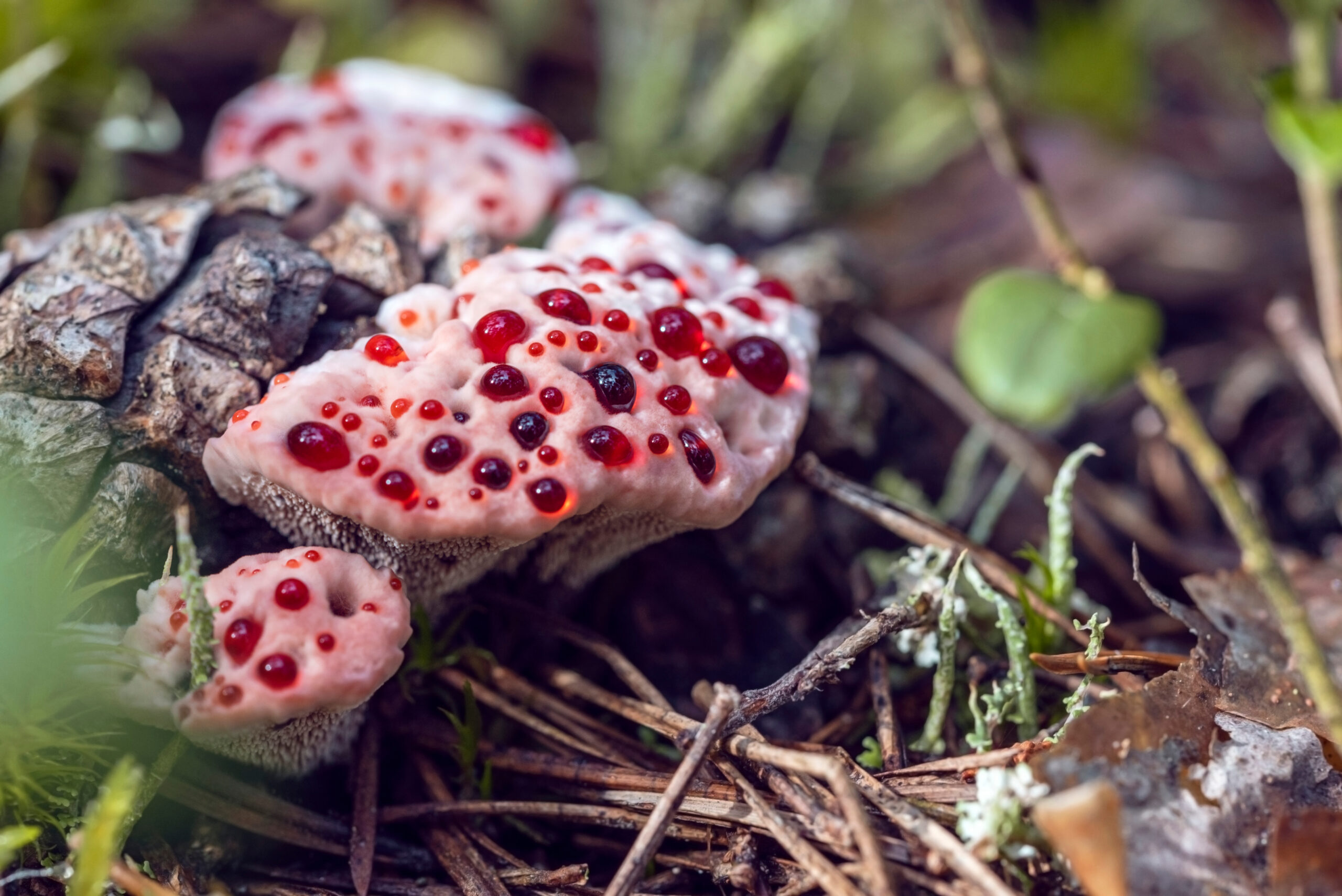
Hydnellum peckii, known as the Bleeding Tooth Fungus, is instantly recognizable for its blood-like red droplets that seep through its creamy, tooth-like surface. Found deep in the conifer forests of the Pacific Northwest, this fungus stands out with its bizarre and slightly unsettling appearance. The red liquid is actually a sap exuded by the fungus, which helps keep the structure hydrated in its damp, shady environment. Beneath this unusual surface, the Bleeding Tooth Fungus forms small, spiky projections that give it its name. Despite its odd appearance, it’s not toxic but incredibly bitter, making it unappealing to wildlife and humans alike. This unique adaptation ensures it remains largely undisturbed. The species plays an essential role in forest health, forming a symbiotic relationship with tree roots that aids nutrient absorption.
Mycena chlorophos (Bioluminescent Fungus)
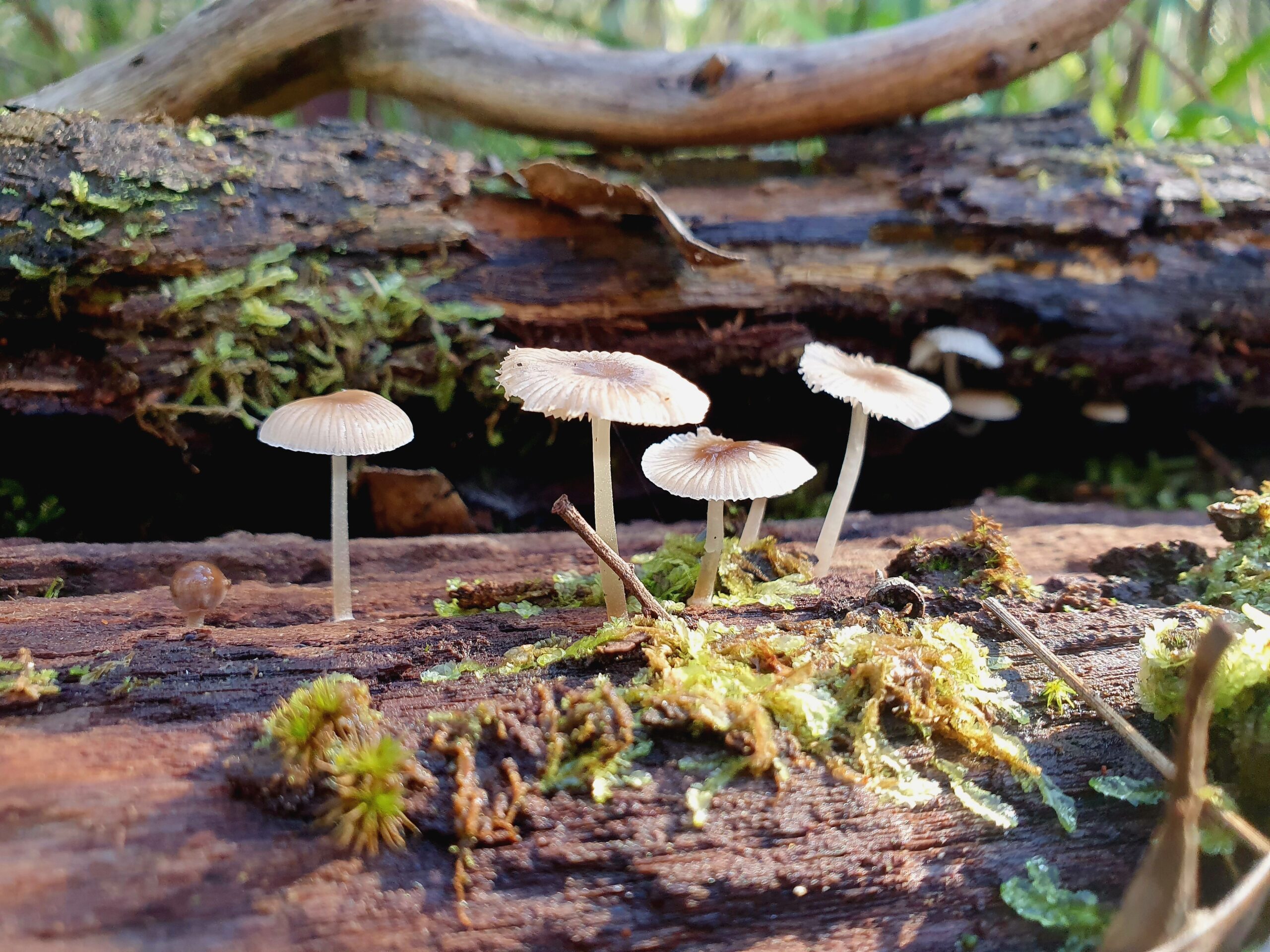
Mycena chlorophos glows like a tiny green lantern in the damp, dark forests of Japan’s Ryukyu Islands. This bioluminescent fungus emits a soft, eerie glow that is most vibrant in humid, dark conditions, creating a surreal sight among the fallen leaves and decaying wood. Each tiny cap emits a natural light through a chemical reaction called bioluminescence, similar to that seen in fireflies. Unlike other fungi, Mycena chlorophos is highly dependent on the right humidity levels to thrive, making its glow rare and brief. This fungus’s glow might attract small insects that aid in spore dispersal, helping it spread across its habitat. Found on decaying wood, Mycena chlorophos is an enchanting example of nature’s hidden wonders in Japan’s secluded islands.
Pseudoinonotus dryadeus
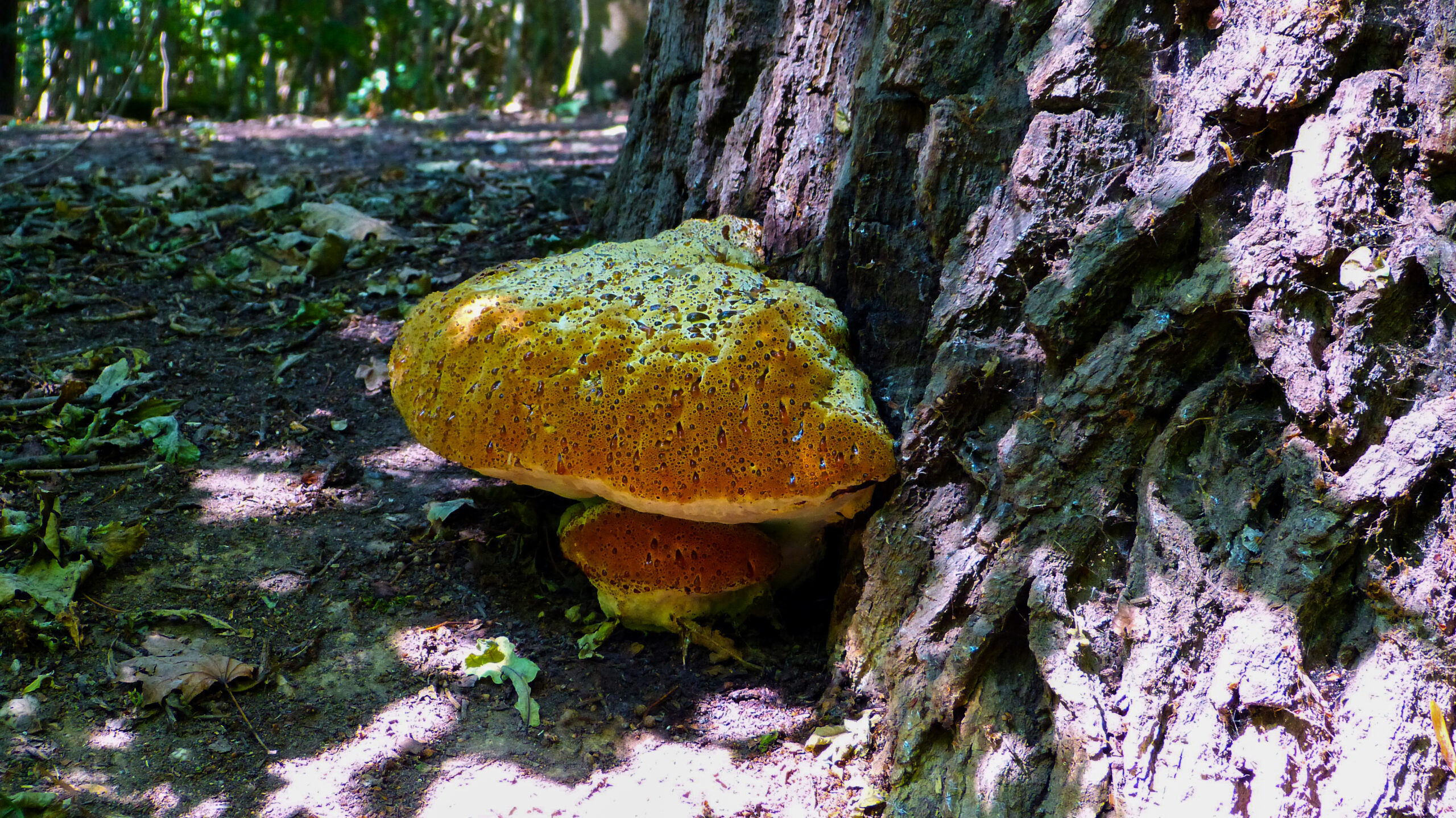
Pseudoinonotus dryadeus, known for its impressive, wood-decay abilities, thrives in the dense Siberian wilderness. This hardy fungus, with a thick, brown, knobby appearance, attaches itself to old trees, slowly decomposing them from the inside out. As it grows, Pseudoinonotus dryadeus forms large, shelf-like structures, sometimes spanning over a foot in diameter, that help it absorb nutrients from its host tree. In a climate as harsh as Siberia, this fungus is adapted to survive low temperatures and limited sunlight, giving it a rugged, tough exterior. It often displays a yellowish or ochre color, blending with the earthy tones of the forest. The species plays a critical role in the forest ecosystem by breaking down deadwood and recycling nutrients back into the soil, supporting future tree growth.
Aleuria aurantia (Orange Peel Fungus)
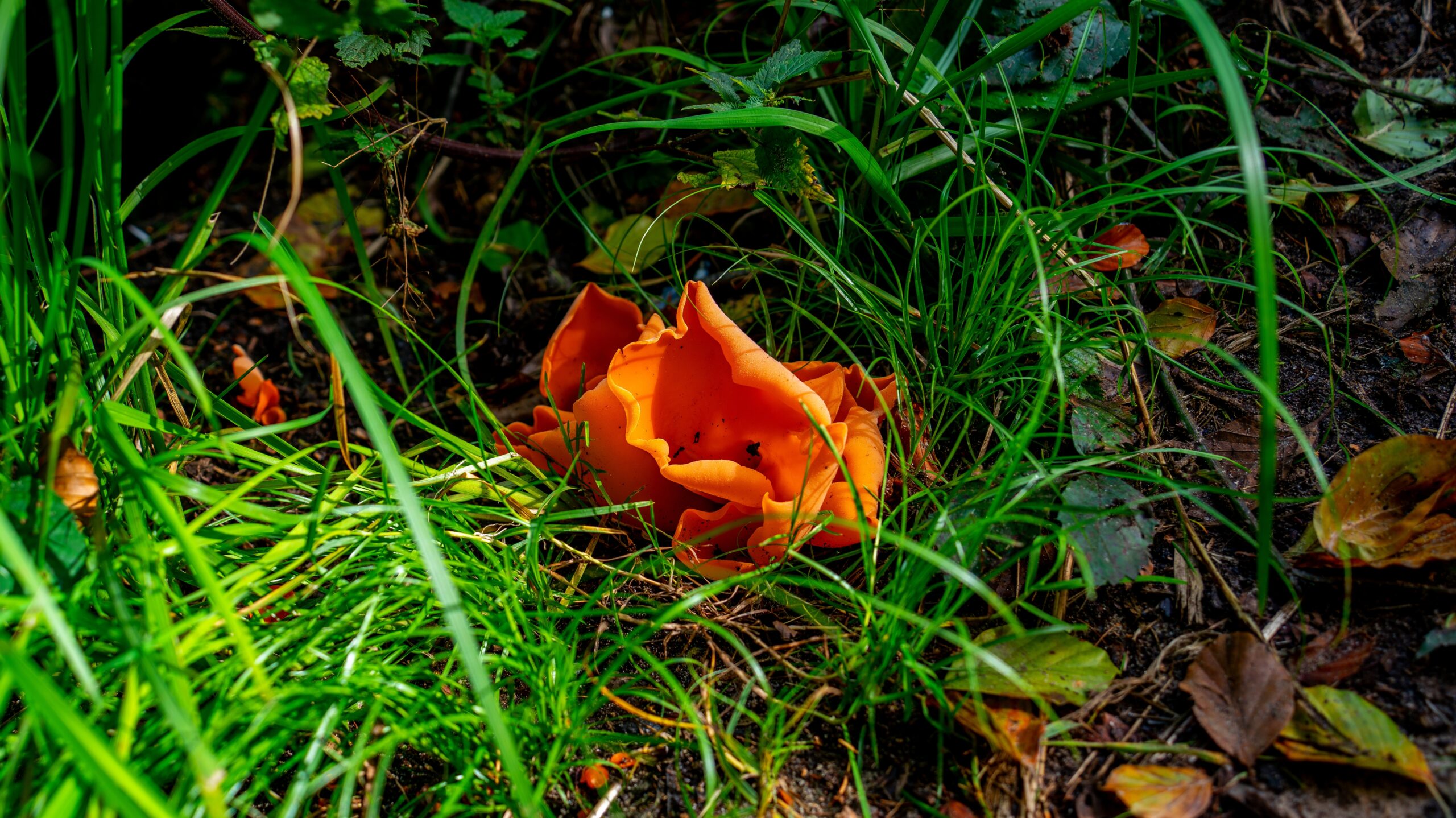
Bright and unmissable, Aleuria aurantia, or the Orange Peel Fungus, can be found in Alaska’s remote tundra. This vivid orange fungus resembles a discarded piece of citrus peel, with its striking color and irregular, wavy edges. Nestling low to the ground, it typically grows in clusters on bare, moist soil, thriving in the chilly, nutrient-poor tundra environment. The bright color of Aleuria aurantia is not just for show; it likely serves as a warning to deter animals, as the fungus is mildly toxic if ingested. Despite its delicate appearance, it is incredibly resilient, able to withstand Alaska’s harsh climate and short growing season. It’s considered a decomposer, playing a vital role in breaking down organic matter and nourishing the sparse tundra ecosystem.
Clavaria zollingeri (Violet Coral Fungus)

Deep within the Brazilian rainforest, Clavaria zollingeri, or the Violet Coral Fungus, stands out with its vibrant purple color and coral-like structure. This unusual fungus forms clusters of branching, finger-like projections, giving it an otherworldly appearance against the forest floor’s green and brown hues. It thrives in the humid, shady undergrowth, benefiting from the rainforest’s rich, organic soil. The color of this fungus can range from a light lavender to deep violet, depending on light exposure and moisture levels. Clavaria zollingeri is non-toxic but remains largely untouched by animals, possibly due to its unusual form and pigmentation. It plays a crucial role in breaking down plant material, contributing to the forest’s biodiversity and nutrient cycle.
Xylaria polymorpha (Dead Man’s Fingers)
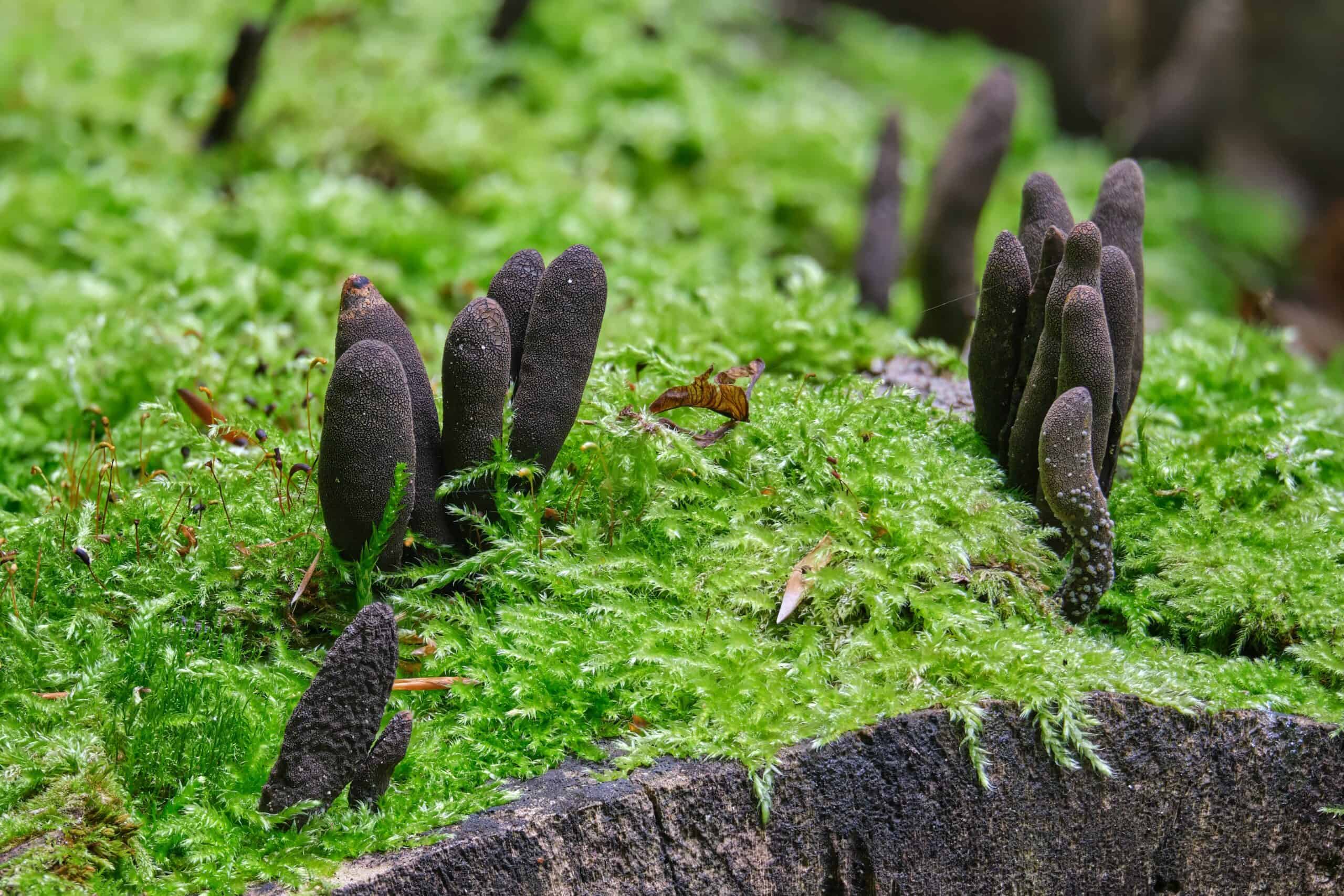
The Appalachian Mountains are home to Xylaria polymorpha, a unique fungus aptly named Dead Man’s Fingers for its eerie, finger-like appearance. Emerging from decaying logs and stumps, it looks almost exactly like a set of gnarled, blackened fingers protruding from the ground. This dark and durable fungus is especially resilient, often seen throughout multiple seasons as it clings to its decaying hosts. Its black, charcoal-like surface is not just a visual feature; it also provides protection from various environmental factors. Xylaria polymorpha breaks down the wood from within, releasing essential nutrients back into the soil. This creepy yet crucial fungus contributes to forest health by speeding up decomposition and soil enrichment.
Cortinarius australiensis

Cortinarius australiensis, a striking mushroom found only in Tasmania, stands out with its bright orange cap and vivid stem. Found in the dense, moist forests, it thrives in the island’s isolated ecosystem, where competition for nutrients is high. This species is known for its large, bulbous cap that varies in shades from yellow to deep orange, depending on light and moisture levels. The fungus’s spores have a unique texture, assisting with spore dispersal in the damp, shaded forest. Although it has a beautiful appearance, Cortinarius australiensis is highly toxic, deterring animals from consuming it. By thriving on decaying plant matter, this fungus supports Tasmania’s forest floor ecosystem, playing an essential role in recycling nutrients within its secluded habitat.
Neohygrocybe ingrata
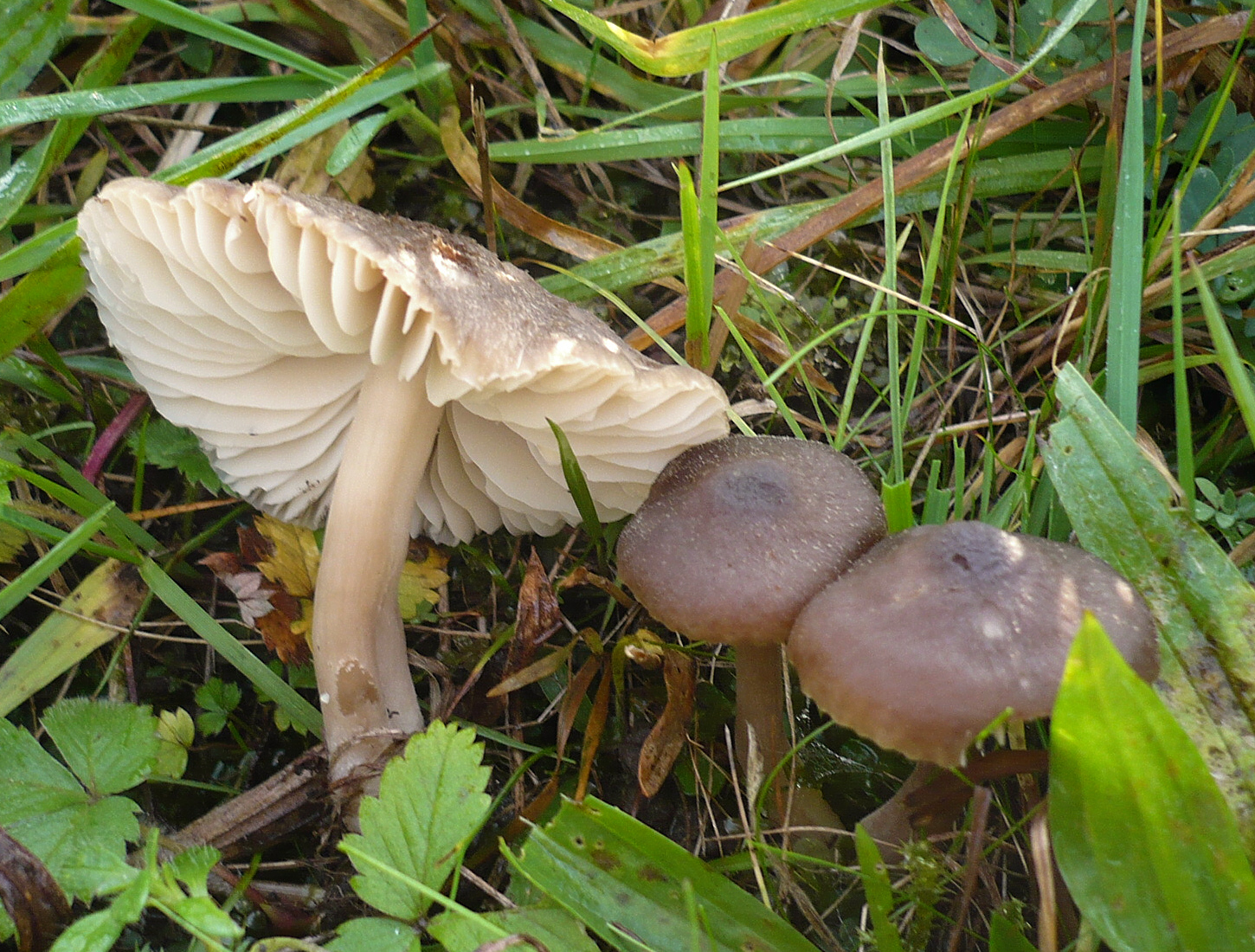
Neohygrocybe ingrata is a rare fungus found in New Zealand’s Southern Alps, with a distinctive, slimy cap that glistens in wet weather. This small, brightly colored mushroom ranges from yellow to a subtle green, helping it blend into the alpine moss and grasses. Known for its waxy texture, Neohygrocybe ingrata thrives in the high-altitude conditions of the Southern Alps, where few other fungi can survive. The cold temperatures and short growing seasons challenge its growth, yet this resilient fungus reappears each season. It plays a significant ecological role, aiding in the decomposition of organic material in the fragile alpine environment. Despite its vibrant color, it’s not edible and remains untouched by wildlife. Its presence signals a healthy alpine ecosystem, relying on the undisturbed soils of its remote habitat.
Lactarius indigo (Indigo Milk Cap)
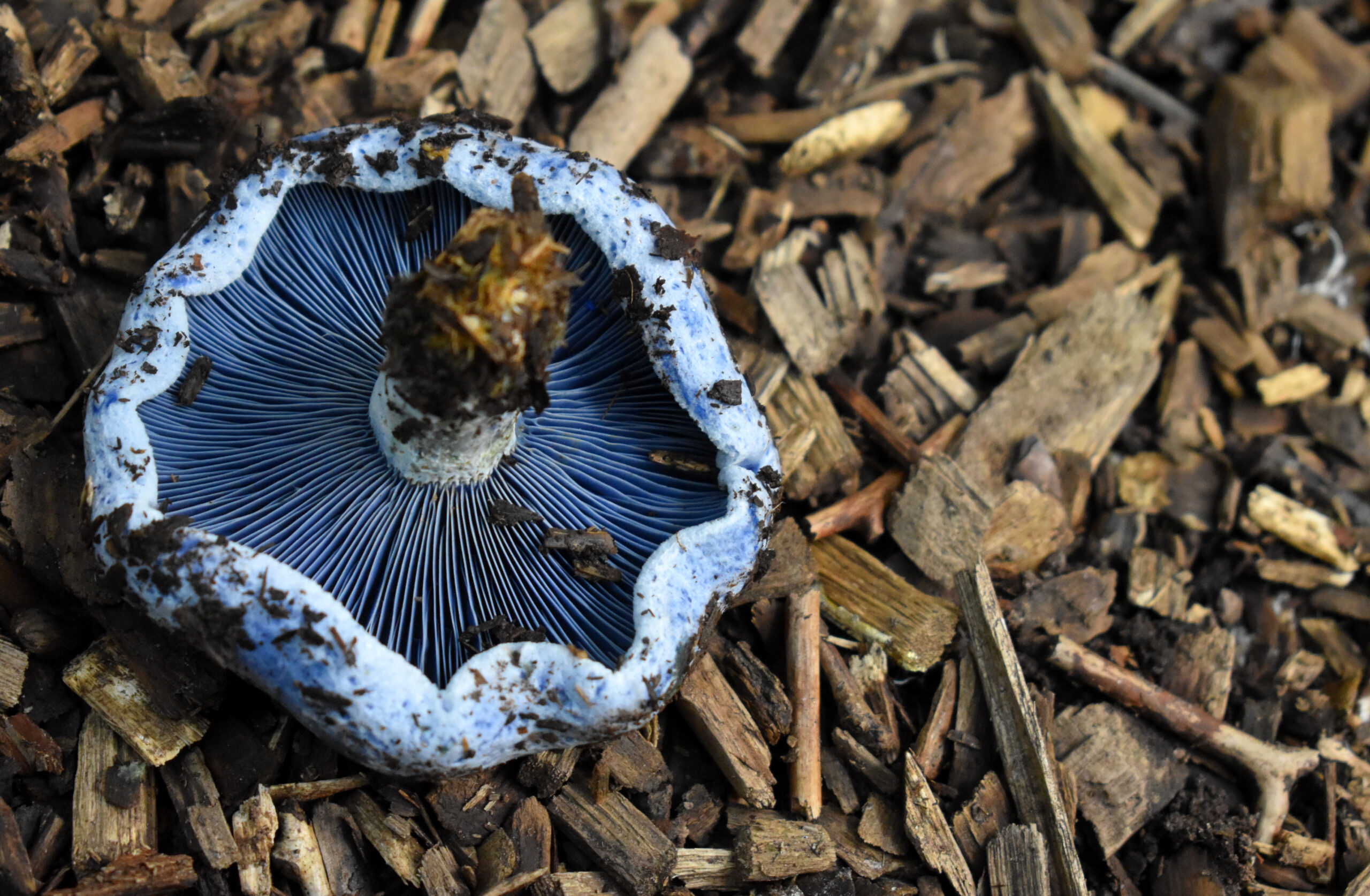
The Indigo Milk Cap, or Lactarius indigo, is easily recognized by its vibrant blue color and unique “milk.” When cut, this mushroom releases an indigo-blue liquid, giving it a mystical appearance in the dense forests of Central America. The cap is funnel-shaped and features concentric rings, adding to its visual appeal. Found in moist, shaded areas, it forms symbiotic relationships with tree roots, aiding in nutrient exchange. Though its color fades slightly with age, the Indigo Milk Cap retains its striking appearance, attracting curious onlookers. It’s considered edible in some cultures, though its flavor is mildly peppery. This unique mushroom contributes to the forest’s nutrient cycling, a small but important part of the tropical ecosystem.
Craterellus fallax
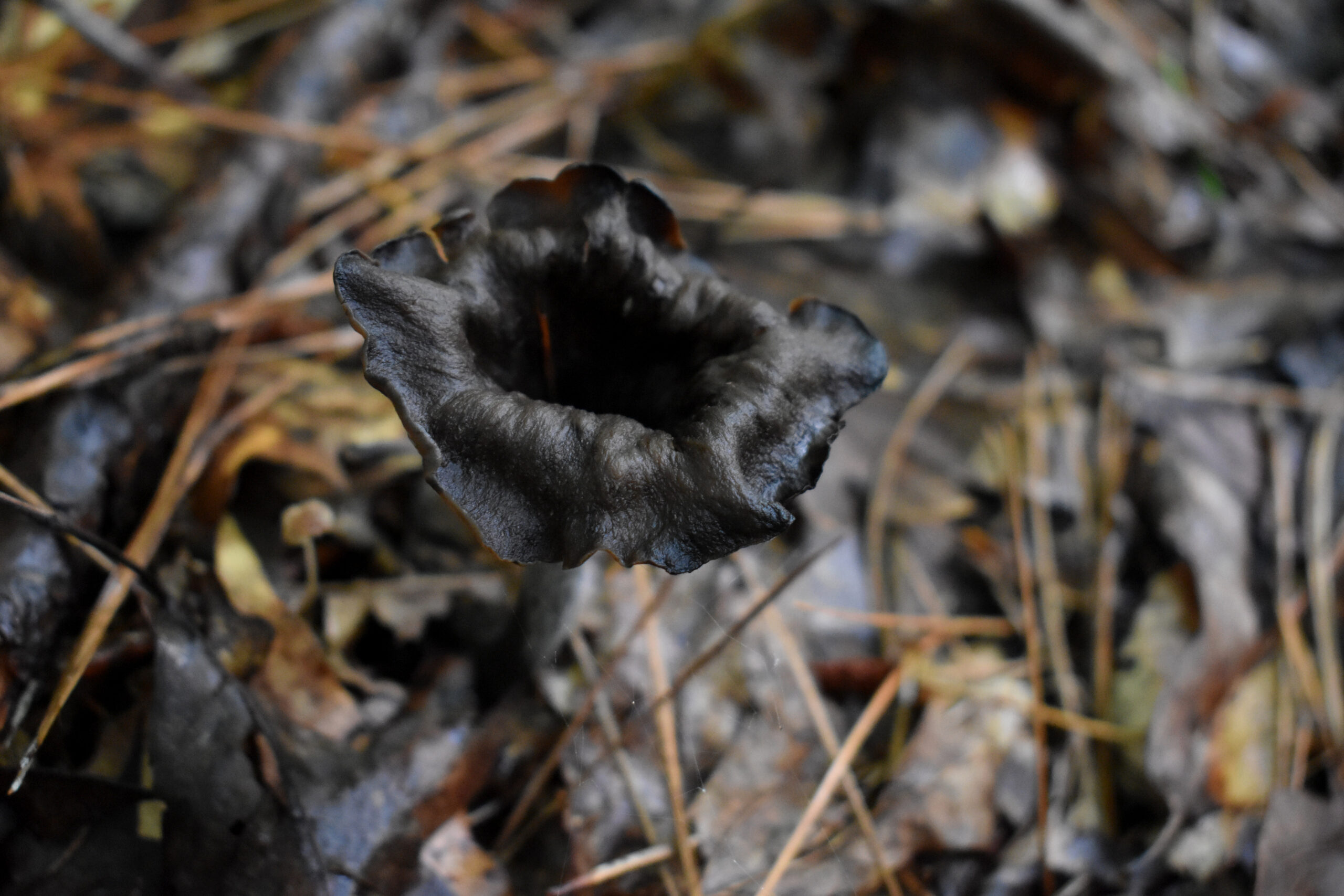
Craterellus fallax, native to the Caribbean Islands, is a close relative of the well-known chanterelle mushroom but has a darker, more subdued coloration. This trumpet-shaped fungus grows in clusters, forming a natural blend with the forest floor. Its hollow, funnel-like structure helps channel nutrients, making it a robust decomposer in the humid, tropical forest. The cap’s dark gray to black color contrasts with the lighter undersides, where spores are released. Craterellus fallax has a rich, earthy scent that complements its role in the forest ecosystem. Despite its inconspicuous appearance, it’s a valuable species for nutrient recycling, enhancing soil fertility for nearby plants. It also has culinary uses in some regions, prized for its rich, smoky flavor.
Entoloma hochstetteri (Blue Entoloma)
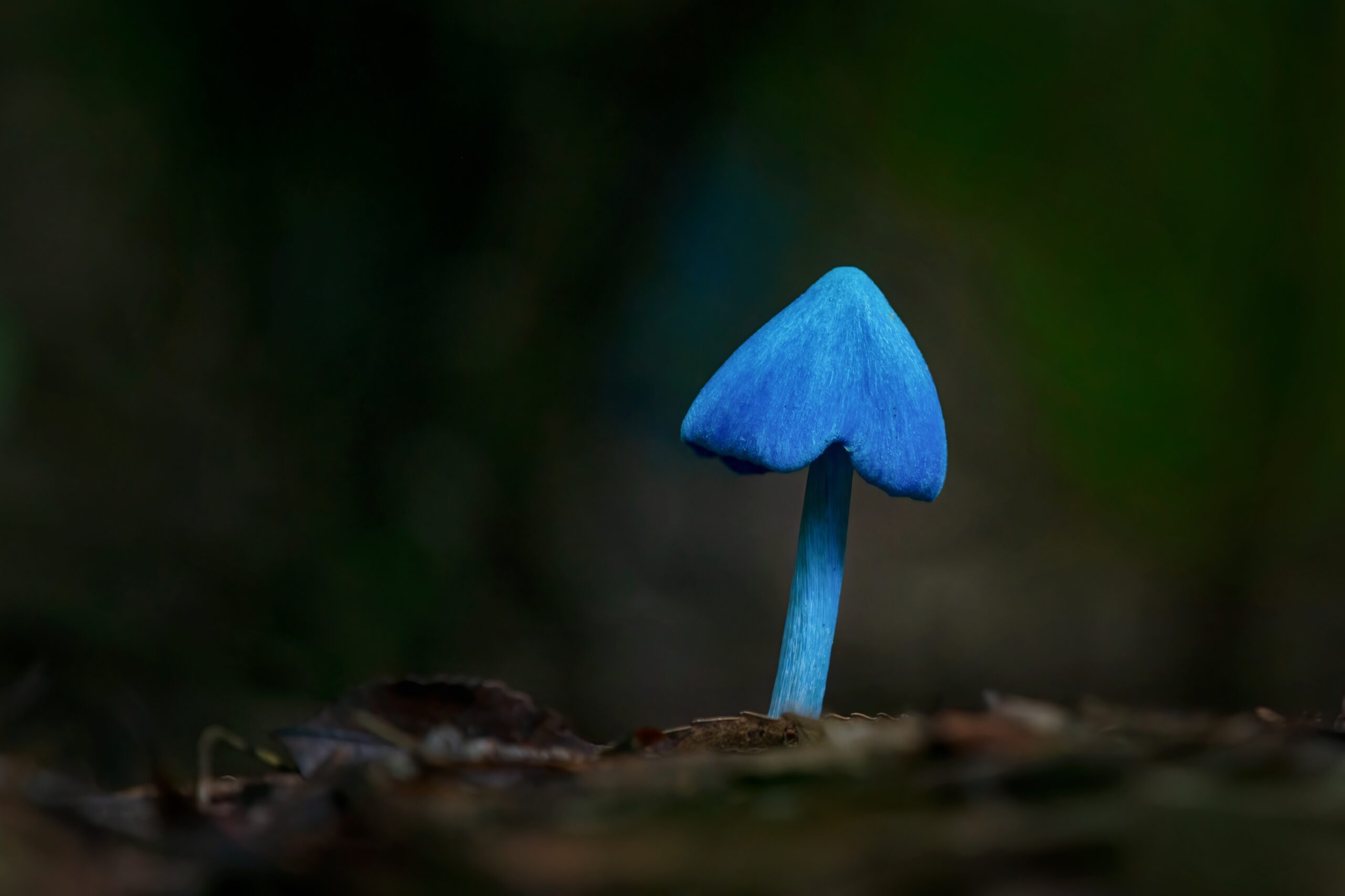
The Blue Entoloma, or Entoloma hochstetteri, is a strikingly vibrant blue mushroom found only in New Zealand’s forests. With its rich blue hue, this small fungus resembles a gemstone amid the green undergrowth. It’s known for its unusual pigments, which scientists study to better understand natural dye processes. Although visually appealing, the Blue Entoloma is not edible due to potential toxins. It grows in damp, shaded forest areas, often appearing in clusters on the forest floor. Its role in the ecosystem involves breaking down decaying matter, helping to recycle nutrients in these dense forests. This rare fungus remains a symbol of New Zealand’s unique biodiversity, contributing to the overall health of its natural habitat.
Gyromitra esculenta (False Morel)
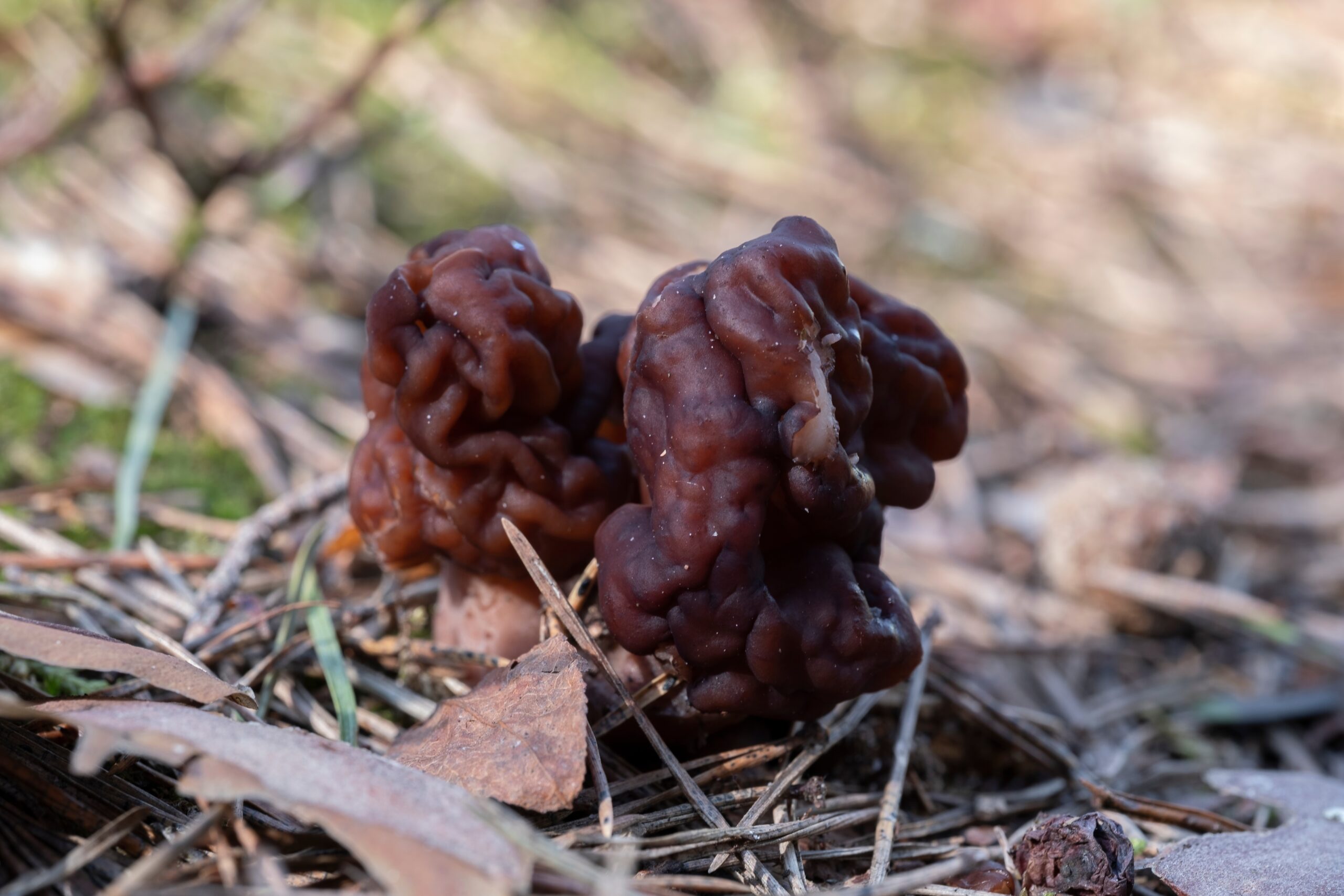
Gyromitra esculenta, also known as the False Morel, is a brain-like fungus found in the boreal forests of Scandinavia. Its dark, wrinkled surface resembles a twisted sponge, making it distinct yet deceptive in appearance. Although it looks similar to edible morels, Gyromitra esculenta contains toxic compounds that can cause severe poisoning if not properly prepared. It thrives in coniferous forests, where it decomposes plant material in the cool, moist environment. Some cultures have learned to prepare it by extensive cooking, neutralizing the toxins. Despite its toxicity, this fungus plays a crucial role in the forest ecosystem, recycling nutrients back into the soil. It remains a fascinating example of nature’s balance between beauty and danger.
Marasmius haematocephalus
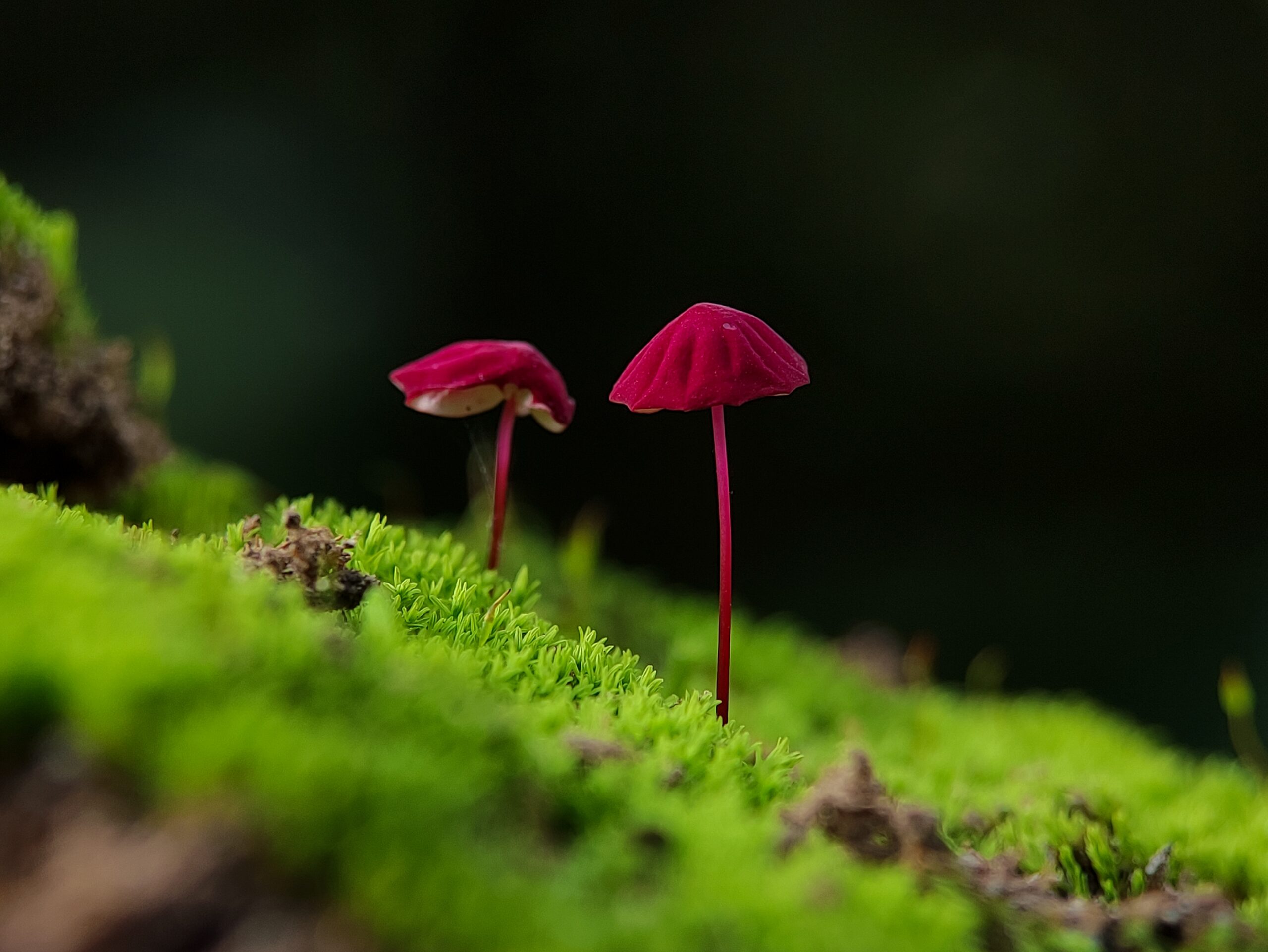
Marasmius haematocephalus, a tiny but vibrant fungus, adds a splash of red to the forest floor in Madagascar. This delicate mushroom has a slender stem topped with a bright red cap, making it easy to spot among leaf litter. It thrives in tropical, humid environments, relying on decaying organic material for sustenance. The cap’s surface is smooth and slightly waxy, helping it retain moisture in Madagascar’s dense forests. Although it’s small, it plays a large role in decomposing organic matter and enriching the soil. Its presence supports a healthy ecosystem, contributing to nutrient cycling in the rich biodiversity of Madagascar’s forests. Due to its fragile structure, it’s sensitive to environmental changes, thriving best in undisturbed, pristine areas.
Omphalotus nidiformis (Ghost Fungus)
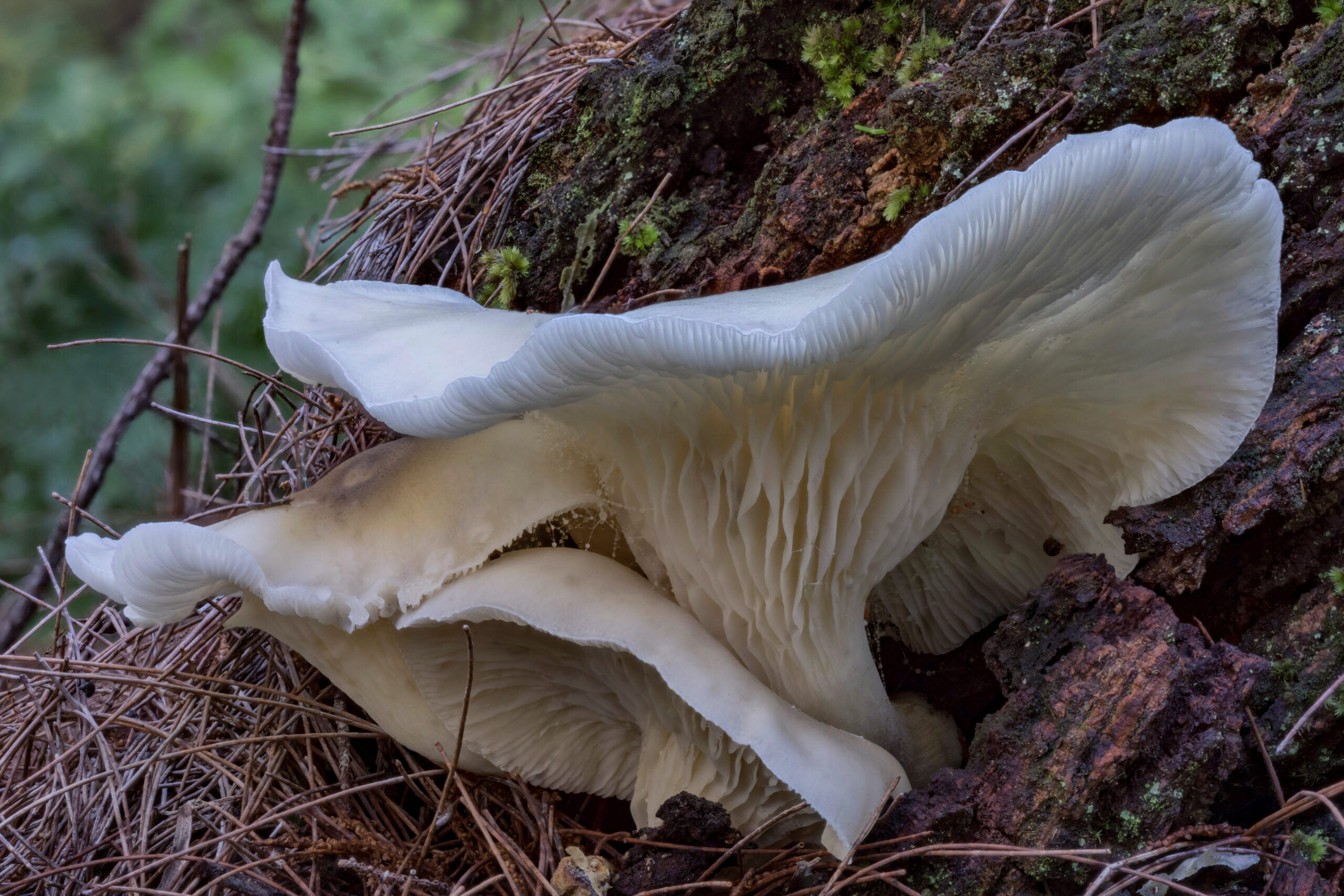
Omphalotus nidiformis, known as the Ghost Fungus, is famous for its eerie bioluminescent glow in the forests of Southeastern Australia. At night, its gills emit a faint, greenish light, creating a haunting effect in the dark. This luminescent fungus grows on decaying wood, particularly eucalyptus trees, and releases spores from its gilled underside. Its color ranges from pale white to purple or black, depending on age and moisture levels. The Ghost Fungus is highly toxic, deterring animals from consuming it, and is not safe for human consumption. This bioluminescent feature may aid in attracting insects that help spread its spores. Omphalotus nidiformis is a captivating example of nature’s glow, adding a mystical quality to Australia’s wilderness.
Tricholoma matsutake
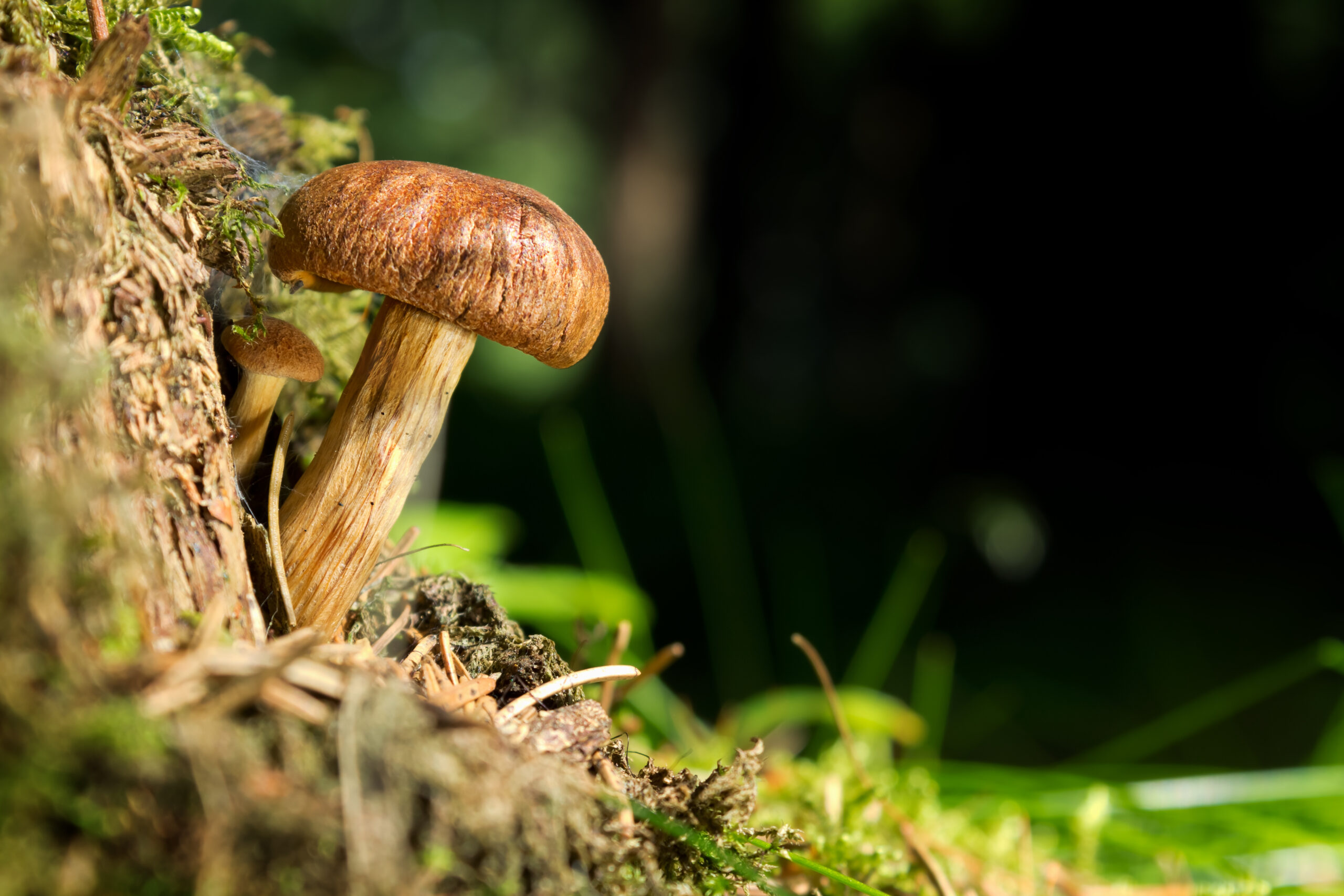
Tricholoma matsutake, also known as the Matsutake mushroom, is a prized fungus native to the dense woodlands of Japan. Its earthy aroma, often described as spicy and cinnamon-like, makes it a highly sought-after delicacy in Japanese cuisine. Matsutake mushrooms grow symbiotically with pine trees, depending on the tree’s roots for nutrients. They are notoriously challenging to cultivate, making them rare and expensive. The mushroom’s thick, white stem and brownish cap blend into the forest floor, providing natural camouflage. Despite its culinary value, overharvesting and habitat loss have made Tricholoma matsutake increasingly scarce. Its presence in the forest signifies a healthy ecosystem, as it only grows in pristine, undisturbed areas.
Mycena interrupta (Pixie’s Parasol)
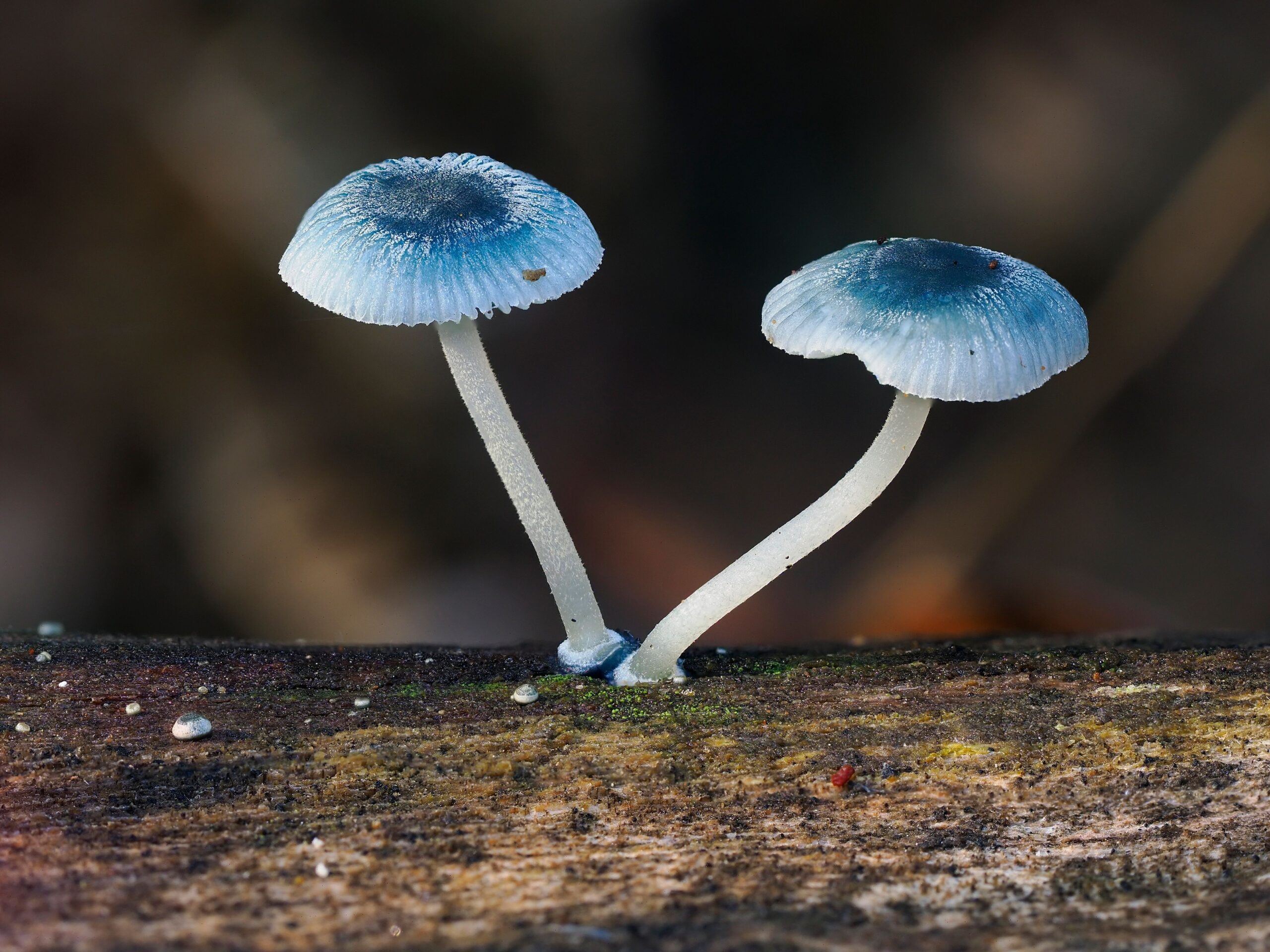
Mycena interrupta, affectionately called Pixie’s Parasol, is a bioluminescent fungus that brings a splash of turquoise to Australia’s eucalyptus forests. These tiny mushrooms are found clustered on decaying wood, thriving in the damp, shaded understory. Their caps are strikingly blue, measuring less than an inch across, making them appear almost otherworldly against the dark forest floor. The delicate stem holds a translucent cap that seems to glow, creating an enchanting sight in the twilight. This mushroom relies on the decayed organic material of eucalyptus trees, contributing to forest decomposition and soil health. Although tiny, Pixie’s Parasol plays an essential role in nutrient cycling, breaking down complex plant matter. It’s a visual treasure of Australia’s unique ecosystems.
Cordyceps gunnii
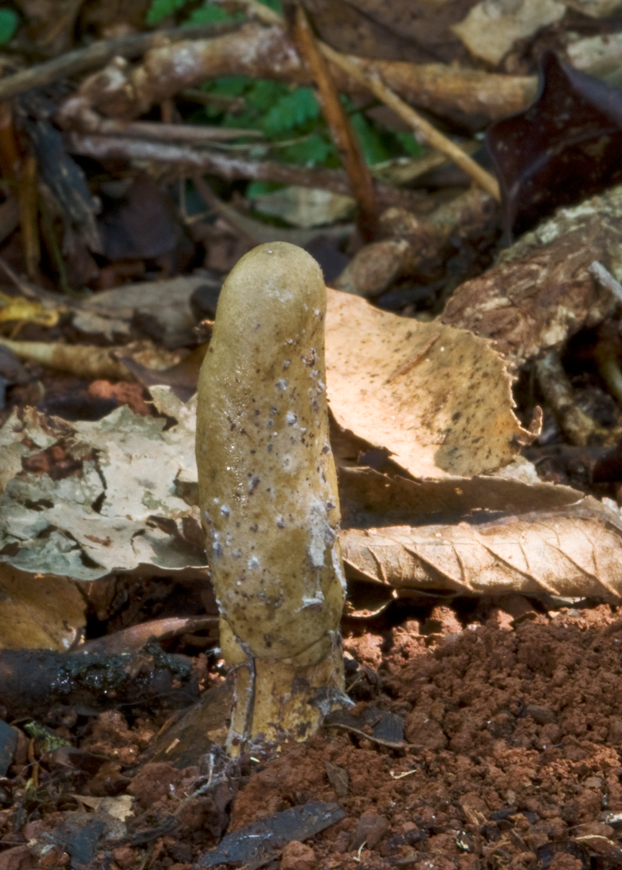
Cordyceps gunnii, found in Bhutan’s highlands, is a parasitic fungus with an unusual life cycle. It infects caterpillars and eventually replaces their bodies, emerging as a thin, dark stalk from the insect’s head. This transformation is essential for the fungus to reproduce, as it releases spores from the elevated stalk to disperse across its alpine habitat. The people of Bhutan prize Cordyceps gunnii for its medicinal properties, as it’s believed to boost immunity and energy. Harvesting this fungus is challenging due to its remote, high-altitude environment and labor-intensive collection process. Cordyceps gunnii plays a unique role in balancing the alpine ecosystem by controlling insect populations. This fungus is a rare example of how life adapts to extreme environments.
Amanita muscaria var. inzengae
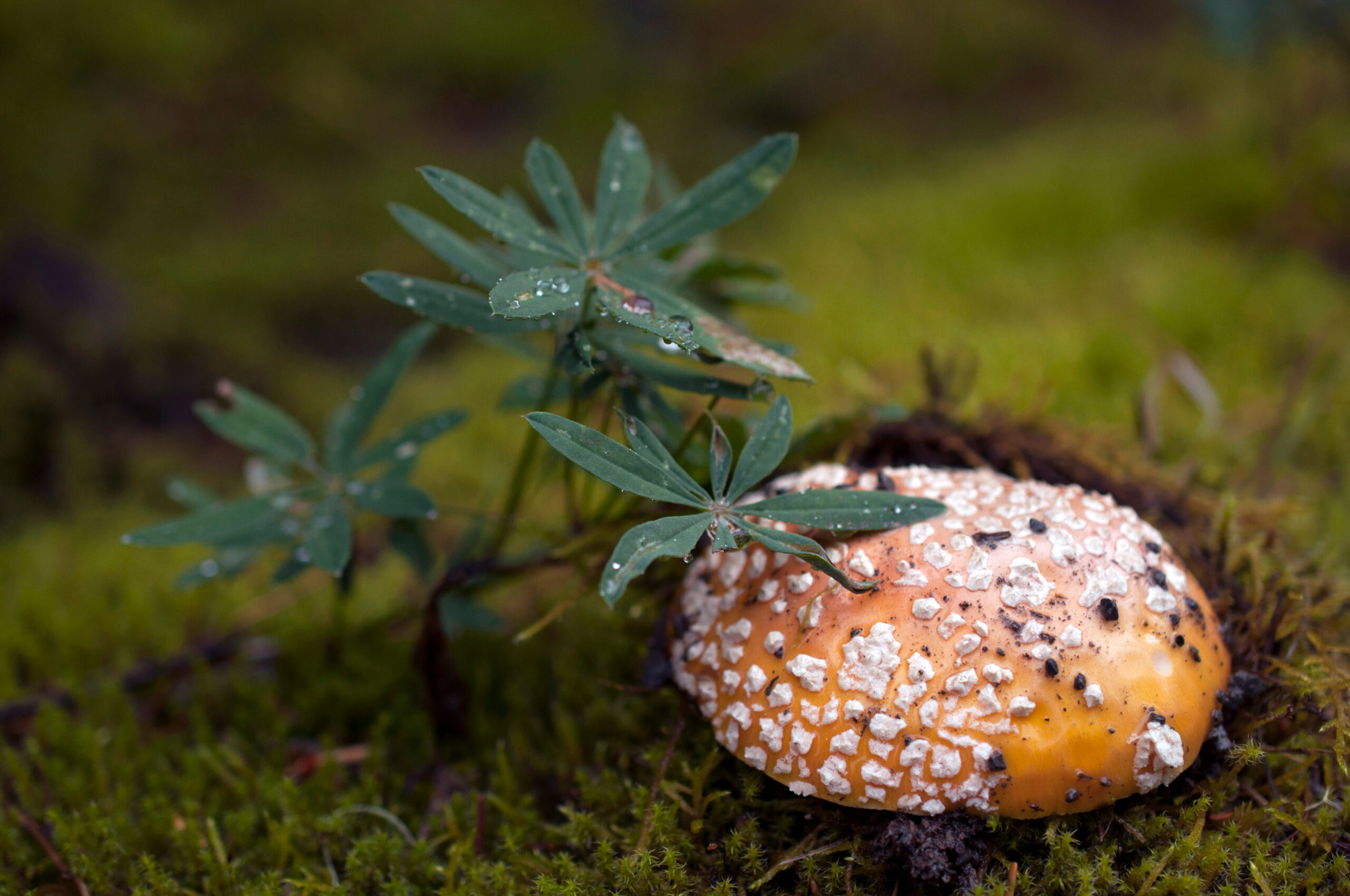
Amanita muscaria var. inzengae, a rare variant of the iconic Fly Agaric mushroom, is native to the Mediterranean’s sun-dappled forests. Unlike its bright red relatives, this variety has a distinctive yellow to golden cap, spotted with white flecks. Its thick white stem and bulbous base add to its mushroom-like appearance, making it unmistakable among the region’s flora. This fungus forms a symbiotic relationship with various Mediterranean tree species, aiding in nutrient absorption. While toxic if consumed, it’s known for its psychoactive compounds, used historically in rituals and ceremonies. Amanita muscaria var. inzengae’s unique adaptations allow it to flourish in Mediterranean climates, where it’s a rare but vital part of the forest ecosystem. Its presence highlights the rich fungal diversity in these ancient forests.
Hymenogaster tener
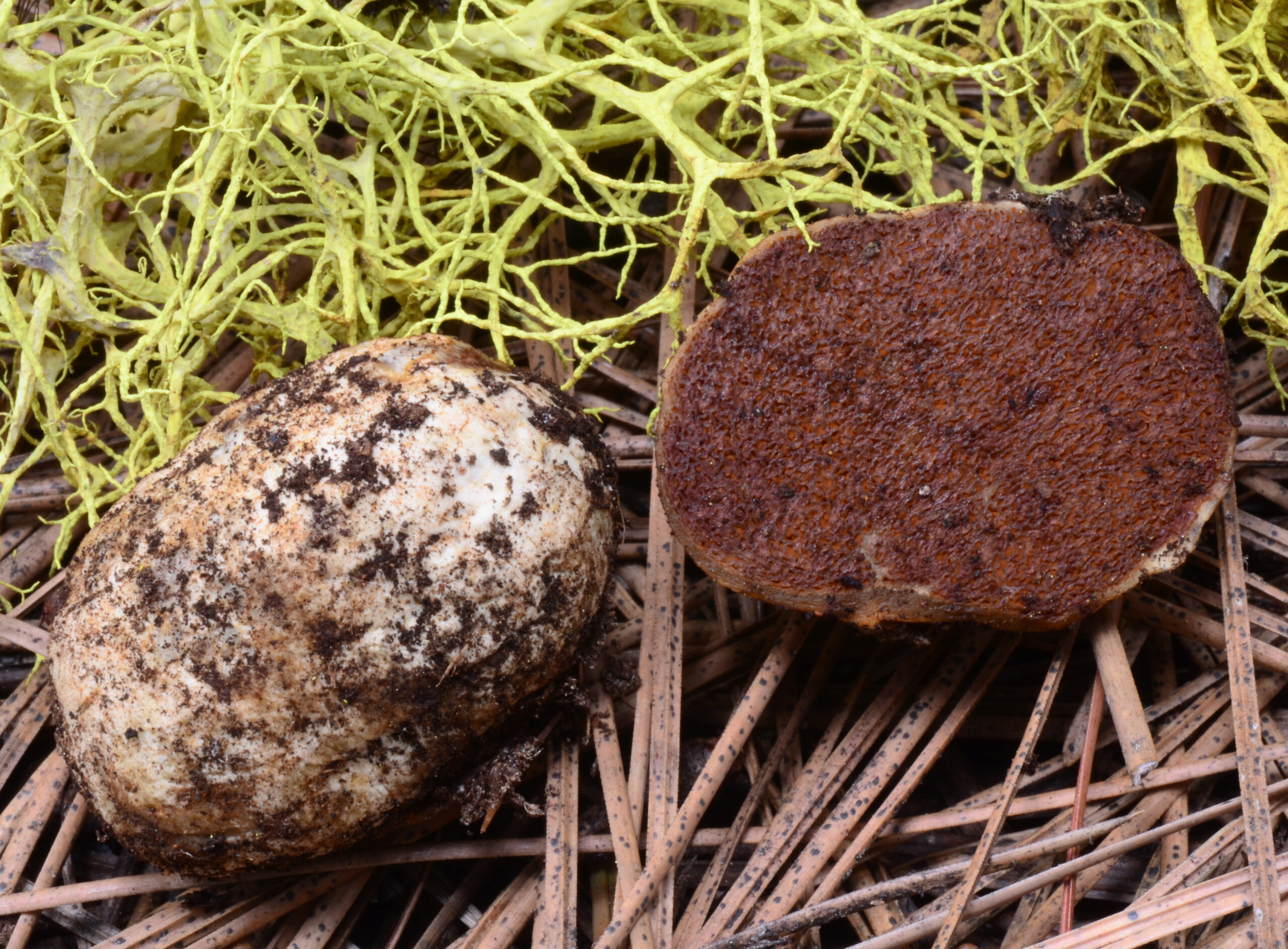
Hymenogaster tener is a truffle-like fungus that thrives in the cool, remote Patagonian Andes. This underground mushroom has a smooth, dark brown exterior and is often mistaken for a truffle due to its earthy aroma and round shape. Unlike truffles, Hymenogaster tener remains hidden beneath the soil, relying on animals to dig it up and disperse its spores. It forms a mutually beneficial relationship with the roots of certain tree species, helping them absorb essential nutrients from the soil. This rare fungus contributes to soil health and forest diversity in Patagonia, supporting the unique ecosystem of the Andes. Its hidden nature makes it difficult to find, making it a treasure for foragers and mycologists alike.
This article originally appeared on Rarest.org.
More from Rarest.org
17 Largest Ships in the World

When it comes to the largest ships in the world, their size alone is enough to leave anyone in awe. Read More.
19 Oldest NBA Players

As NBA players age, the physical demands of the game often shorten their careers, but some manage to defy the odds and play well into their late 30s and even 40s. Read More.
20 Largest Dinosaurs Ever Found
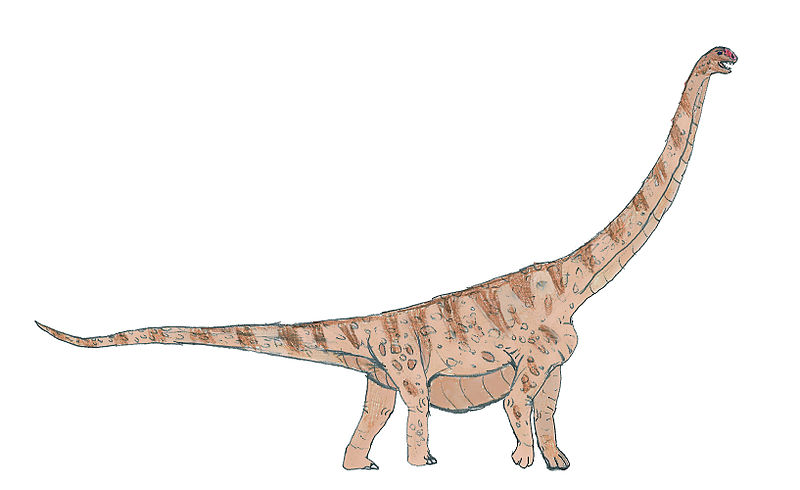
Dinosaurs have always captured the imagination with their immense size and mystery, but some species were so massive that they defy belief. Read More.
